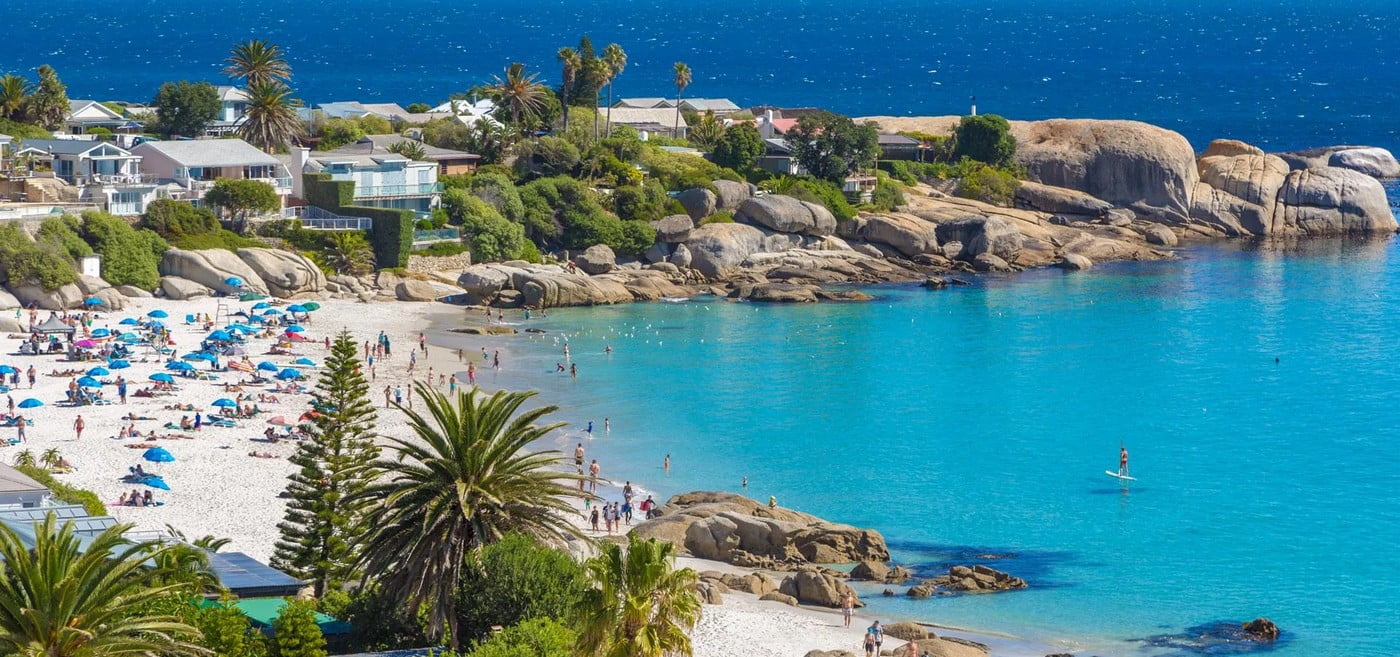Sawubona: the Zulu greeting for welcome, which literally means “I see you.” Sawubona carries a weight and significance that goes far beyond the typical arrival greeting — it means “you are important, and I value you.” It is a greeting as special and significant as the land of its origin. And, when it comes to unforgettable, unique tourist destinations, South Africa is among the best places to visit. In 2019, prior to global lockdowns brought on by the COVID-19 pandemic, 10.23-million people visited the country located in Africa’s southernmost tip to experience its array of amazing attractions.
In 1996, the government of South Africa recognized local and international tourism as a national priority via its 1996 White Paper on the Development and Promotion of Tourism in South Africa. Some years later, the Tourism Act of 2014 further stressed the expansion and development of the tourism sector; the promotion of high-quality tourism products and services; the effective marketing of South Africa as a domestic and international tourist destination; increased cooperation and coordination among all levels of government in developing and managing tourism; and the promotion of responsible tourism for the benefit of South Africa and the enjoyment of all its residents and foreign visitors.
It is a greeting as special and significant as the land of its origin. And, when it comes to unforgettable, unique tourist destinations, South Africa is among the best places to visit.
Thus, over the years, South Africa has blossomed and flourished not only as a top tourist destination, but also as a sustainable, eco-conscious one. Here are some of the top reasons to plan a memorable trip and truly “see” South Africa:
1. Vast, open spaces and stunning terrain
With a surface area of 1,221,037 square kilometers extending latitudinally from 22°S to 35°S and longitudinally from 17°E to 33°E, South Africa is the 24th-largest country in the world and the ninth-biggest among Africa’s 55 states. While a chunk of this terrain consists of plateaus and savannah flatlands, South Africa’s physical landscape is actually quite diverse.
Abundant in natural resources, South Africa’s terrain includes dense sub-tropical woodlands and savannah woodland systems known asbushvelds, meadows, rivers and lakes, forests, deserts, and stunning mountain peaks, as well as paradisiacal beaches and coastal marshes teeming with life. As such, South Africa offers an exciting and varied roster of activities. From mountain hikes and horse rides, to diving, wetlands eco-tours, river boat cruises, walking tours, safaris, golf retreats, cycling tours, and paragliding adventures, to name a few. Fun comes in all forms, in South Africa.
2. Pristine, paradise-like beaches and dive spots
With a coastline that stretches more than 2,850 kilometers from Mozambique to Namibia, bounded by the Southern Ocean, the Indian Ocean, and the Atlantic Ocean, South Africa is every ocean-lover-and-beach-aficionado’s haven. Some of the world’s best beaches are found in Cape Town, which boasts 72 stunning seaside destinations on its coastline, stretching 307 kilometres along the West Coast.
Aside from its breathtaking beaches, South Africa’s oceans are abundant with marine life, making it among the world’s most popular diving destinations. The convergence of the warm Mozambique-Agulhas Current and the cold Benguela Current makes for temperate waters that promote an array of ocean flora and an abundance of all kinds of marine life.
3. Epicurean adventures and gastronomic delights
Gastronomes, rejoice! South Africa — particularly, Cape Town and Johannesburg — is a veritable foodie’s fantasy, what with its exciting cuisine and amazing wine offerings. South African cuisine is a one-of-a-kind synthesis of many diverse foreign cultural influences. Dutch, French, Indian, and Malaysian flavors and cooking techniques are evident at the nation’s culinary table, melding to create palate-pleasing fusion favorites and traditional fare.


Amidst the delectable diversity of its dishes, popular staples include bobotie, a baked dish of minced meat with an egg-based topping; braais, roasted meats that typically include beef steaks, spiced sausages, and pork chops; denningvleis and potjiekos, slow-cooked stews of meat and veggies with an exciting array of spices; chakalaka,a vegetable dish made of onions, tomatoes, peppers, carrots, beans and spices, which is usually served cold; and pap, a porridge of white corn maize. Meanwhile, lovers of the fruit of the vine will take great pleasure in South Africa’s famous wine tours. The Cape Winelands is a vast vineyard area that is home to gorgeous estates, award-winning wines, and acclaimed wine bars and restaurants.
4. Incredibly diverse and rich wildlife
It’s no secret that when it comes to wildlife — flora and fauna, alike — Africa reigns supreme; with over 90 species of large hoofed land animals, 1,000 mammal species, 1,500 bird species, over 2,000 species of freshwater fish, more than 11, 300 species of ocean life, and more than 50,000 known plant species.South Africa, specifically, is the place to fulfill every safari-goer’s dream of spotting the iconic “Big Five” in one day: African bush elephant, African buffalo, black rhino, lion, and leopard.





South Africa is one of the world’s top Big Five destinations, owing to its excellent protected parks and conservation areas, like Madikwe Game Reserve, iSimangaliso Wetland Park, Kruger National Park (plus its roster of private game reserves), Kapama Game Reserve, Hluhluwe-iMfolozi Game Reserve, to name just a few on a list of many.
5. Deeply-rooted traditions and warm, welcoming culture
South Africans have a reputation as a warm, welcoming people who are generous with their smiles, are willing to help, and are eager to meet new people. Theirs is a culture that is prolific, profound, and deeply rooted in tradition. It is also a melting pot of various local customs and tribes — to mention a few, the Zulu, Xhosa, Pedi, Tswana, Ndebele, Khoisan, Hindu, Muslim, and Afrikaner people call South Africa home. Owing to its diversity of cultures and faiths, it is often called the “Rainbow Nation.” All this makes for a rich cultural experience.
6. Family-friendliness and affordability
South Africa affords engaging and exciting opportunities for children to learn and appreciate more about nature and the environment. There are a roster of family-friendly activities, as well as family safari packages and child-friendly accommodations. Many lodges and hotels not only have kid-friendly accommodations but also offer in-house programs (such as junior ranger programs and other educational activities) for children. Beach holidays are likewise popular with families.
Moreover, a South African holiday doesn’t have to break the bank. Because the nation’s infrastructure is geared towards tourism, South Africa is known for its wide range of accommodations, to suit just about every type of budget and holiday. From posh game lodges and five-star hotels to modest yet cozy lodgings like country houses and small hotels, B&Bs, as well as campsites and self-serve venues, there’s something for everyone.
7. Sunny yet temperate weather conditions
South Africa is renowned for its sunshine, with an average of 2,500 hours of sun every year. While it is classified as a dry, semi-arid country, there are wetter and more humid areas, as well, on account of the nation’s diverse topography. The most ideal months to plan a trip are between May to October, for cooler climates and perfect safari/wildlife viewing conditions.








